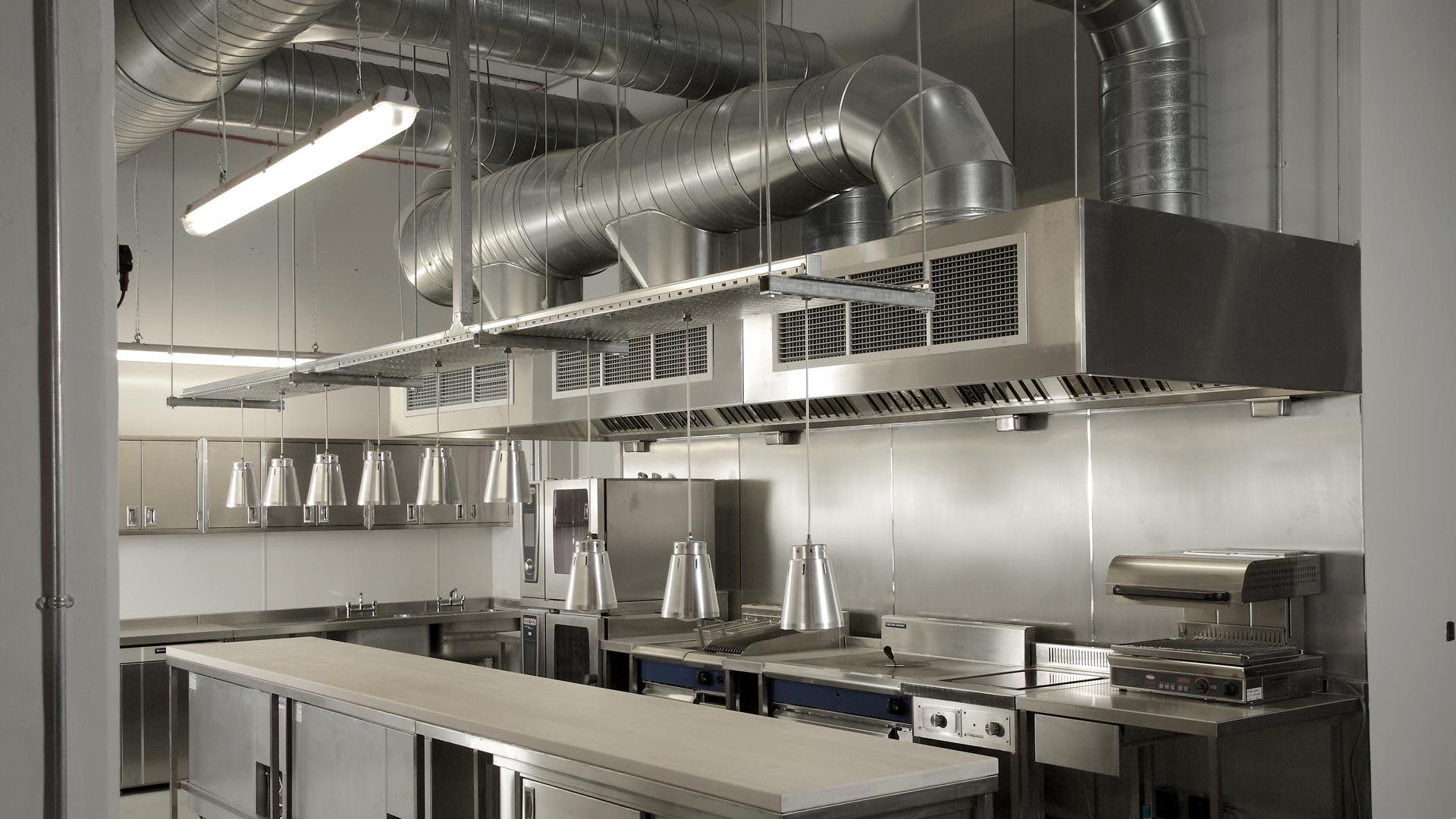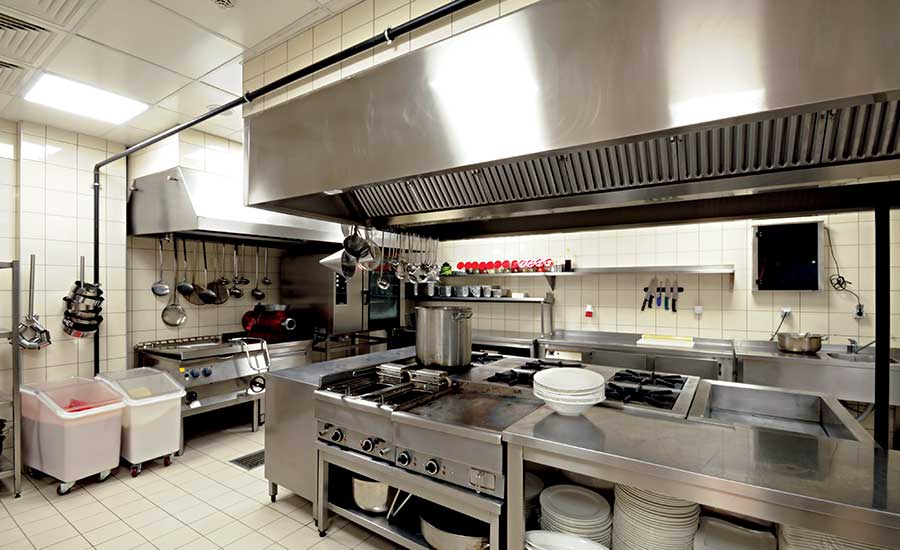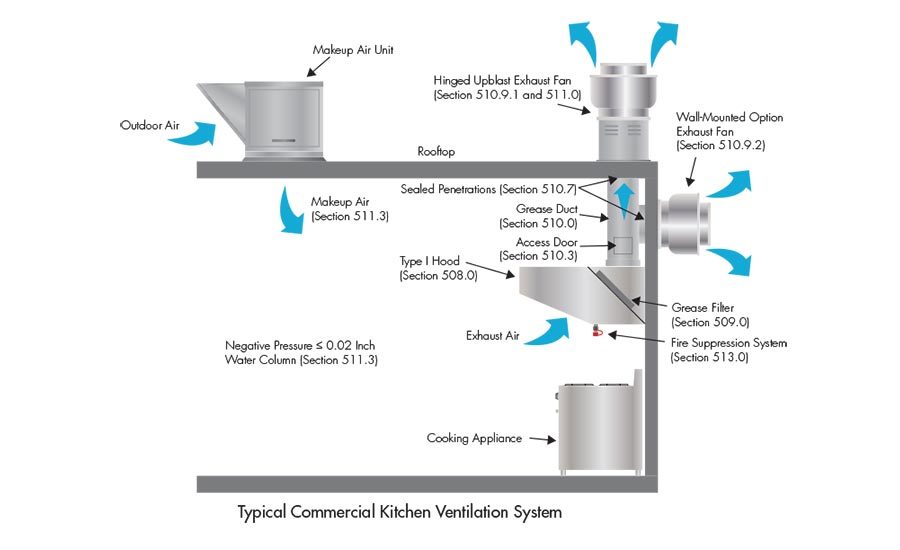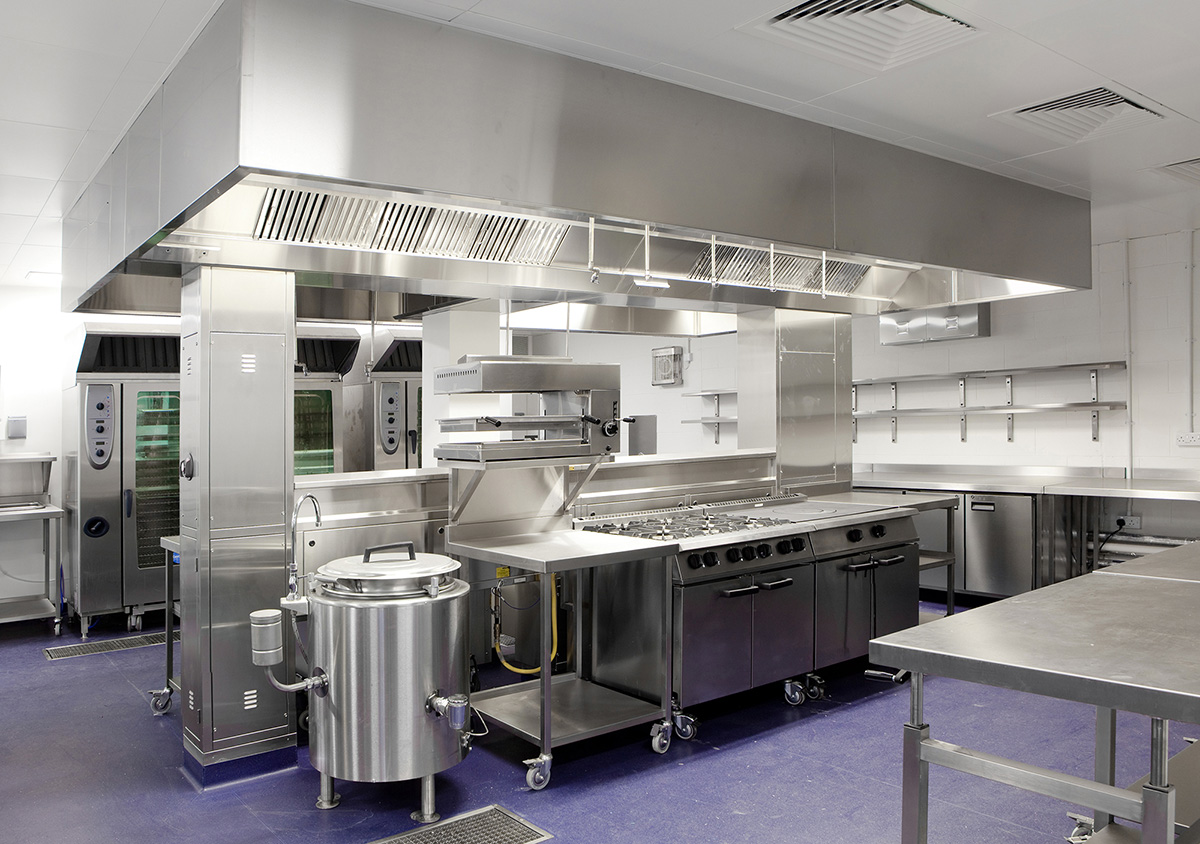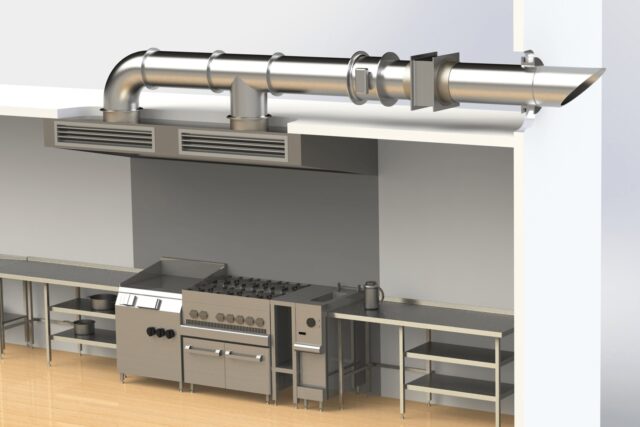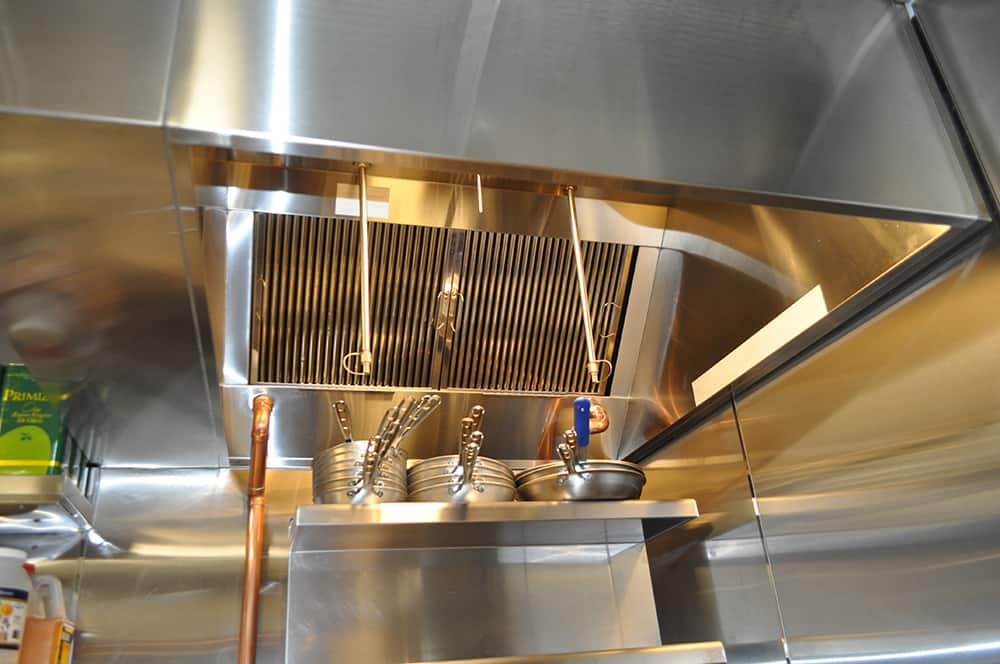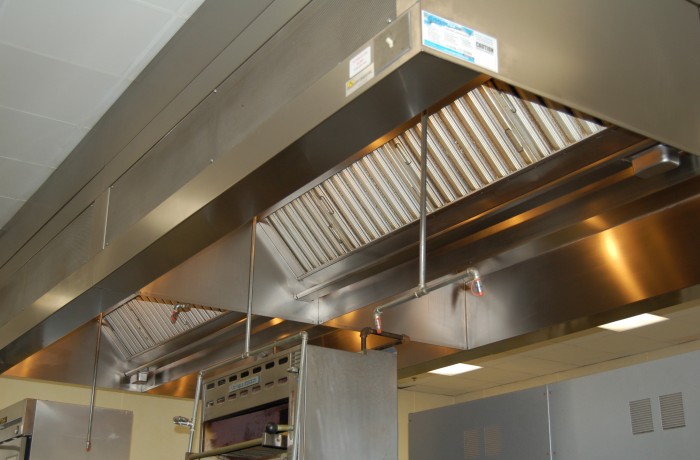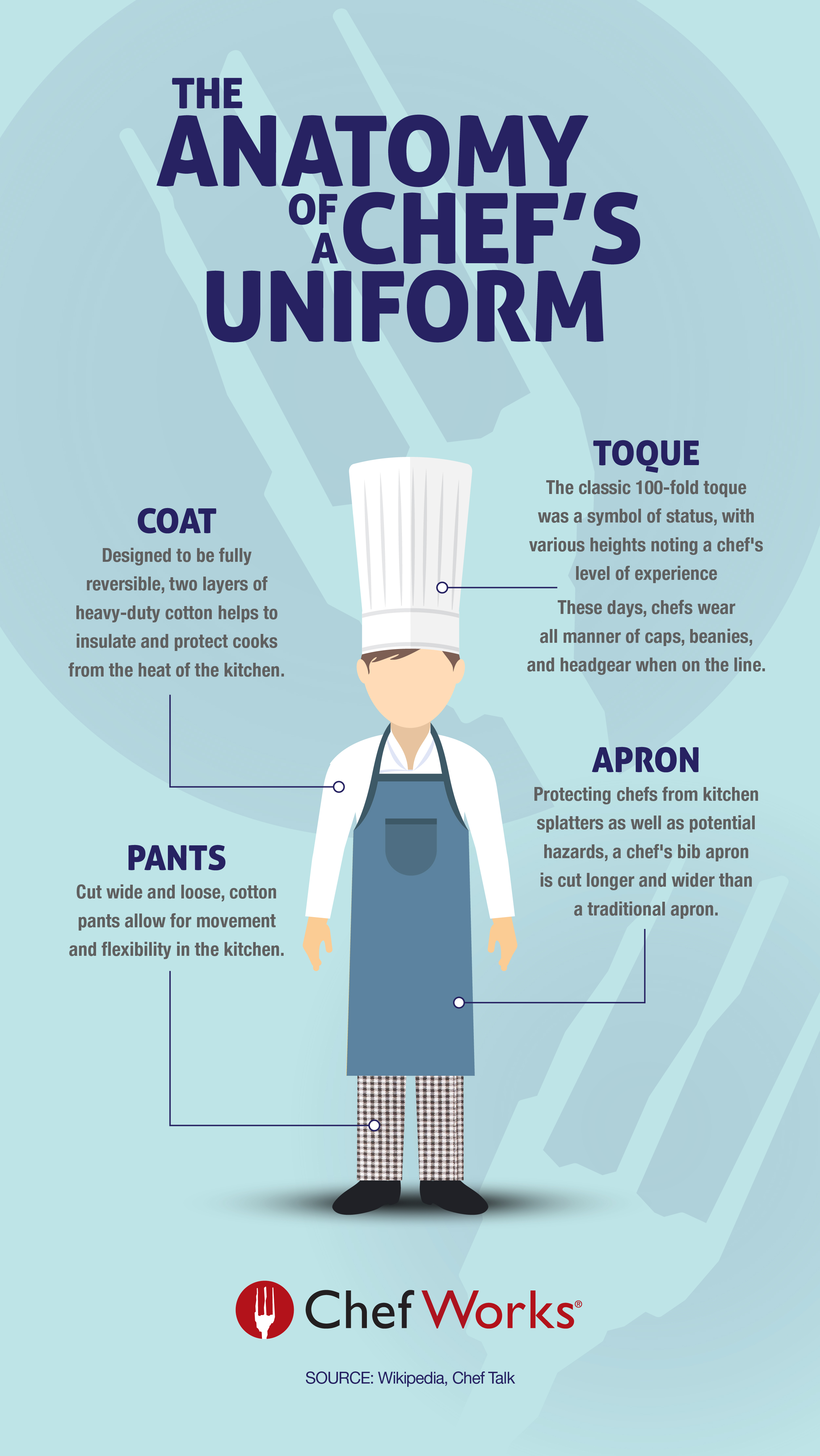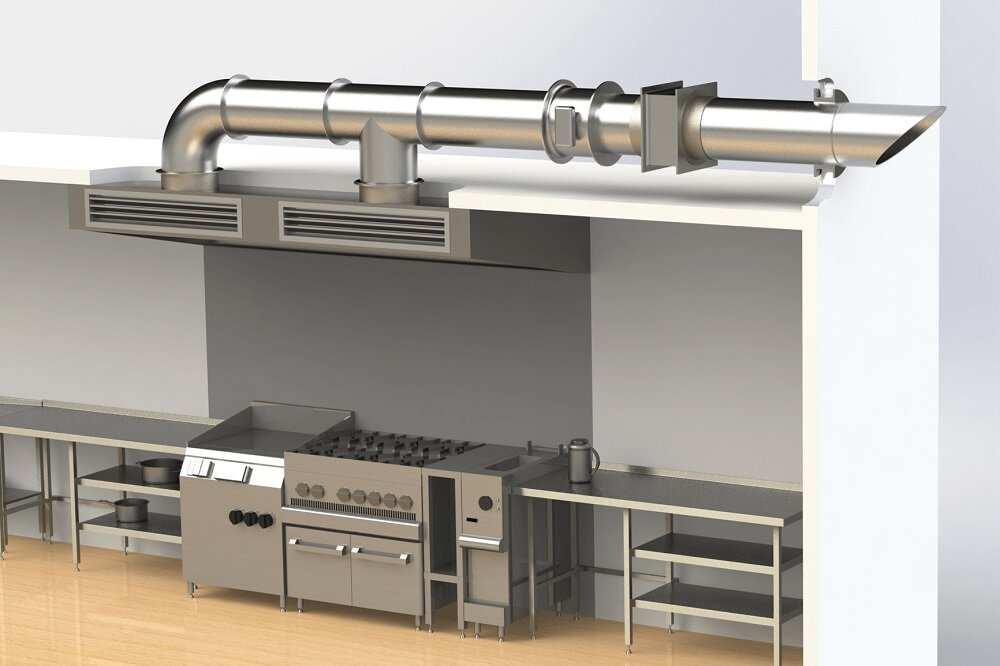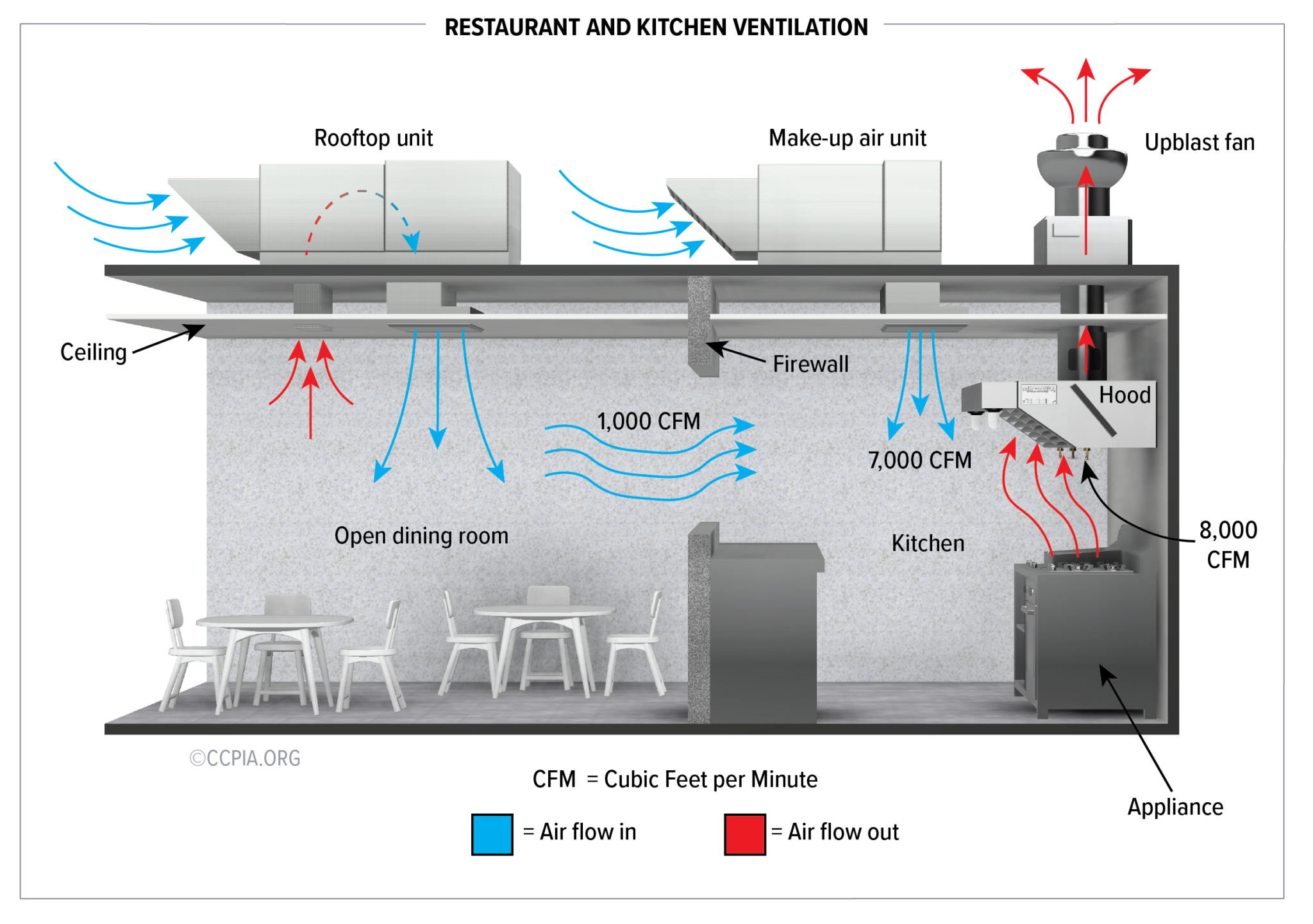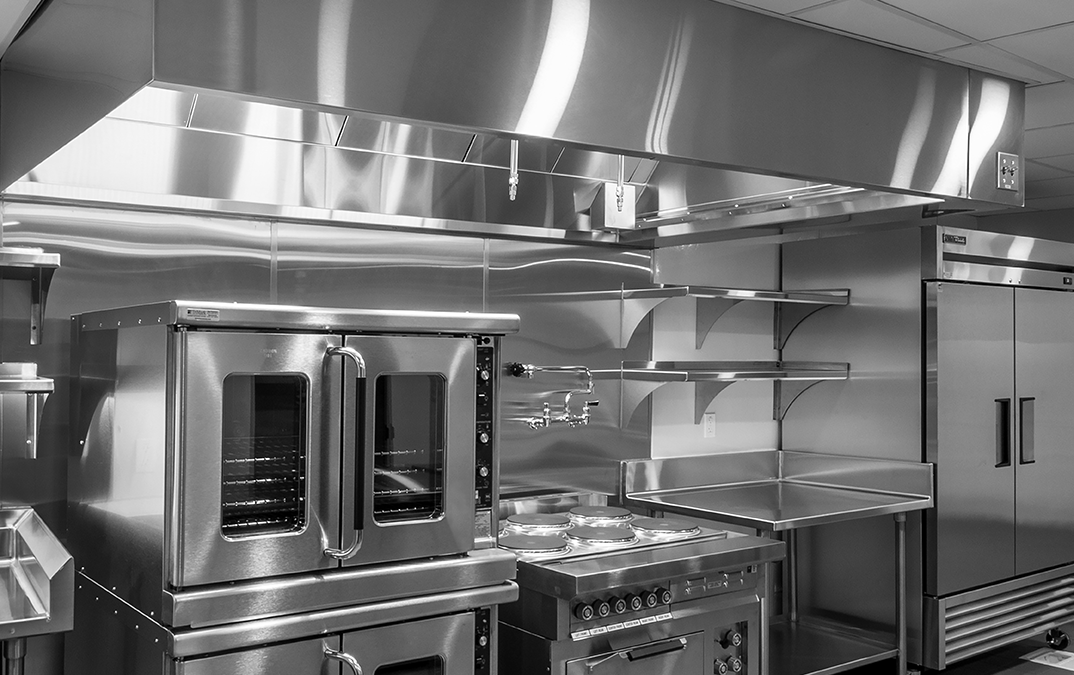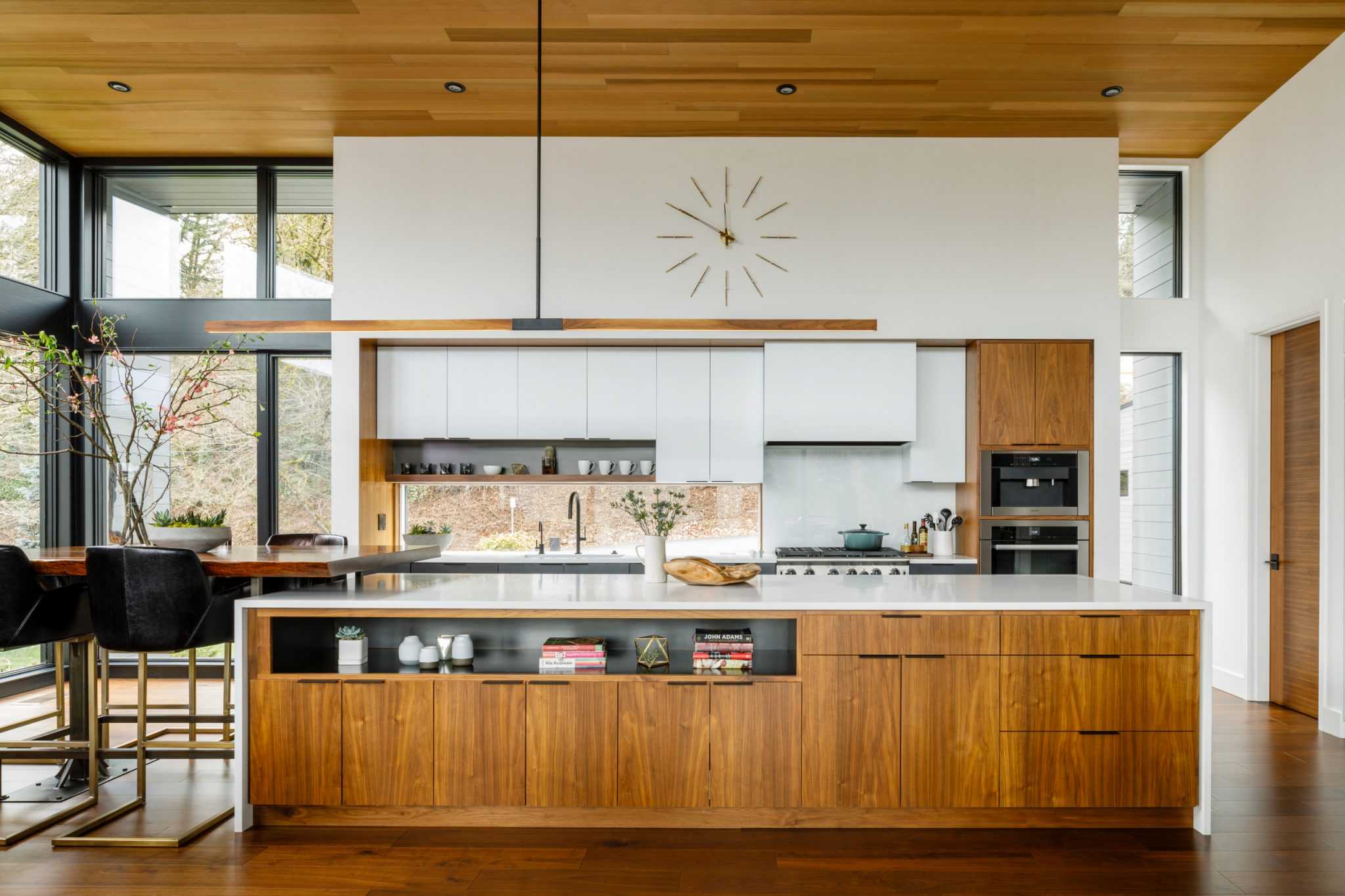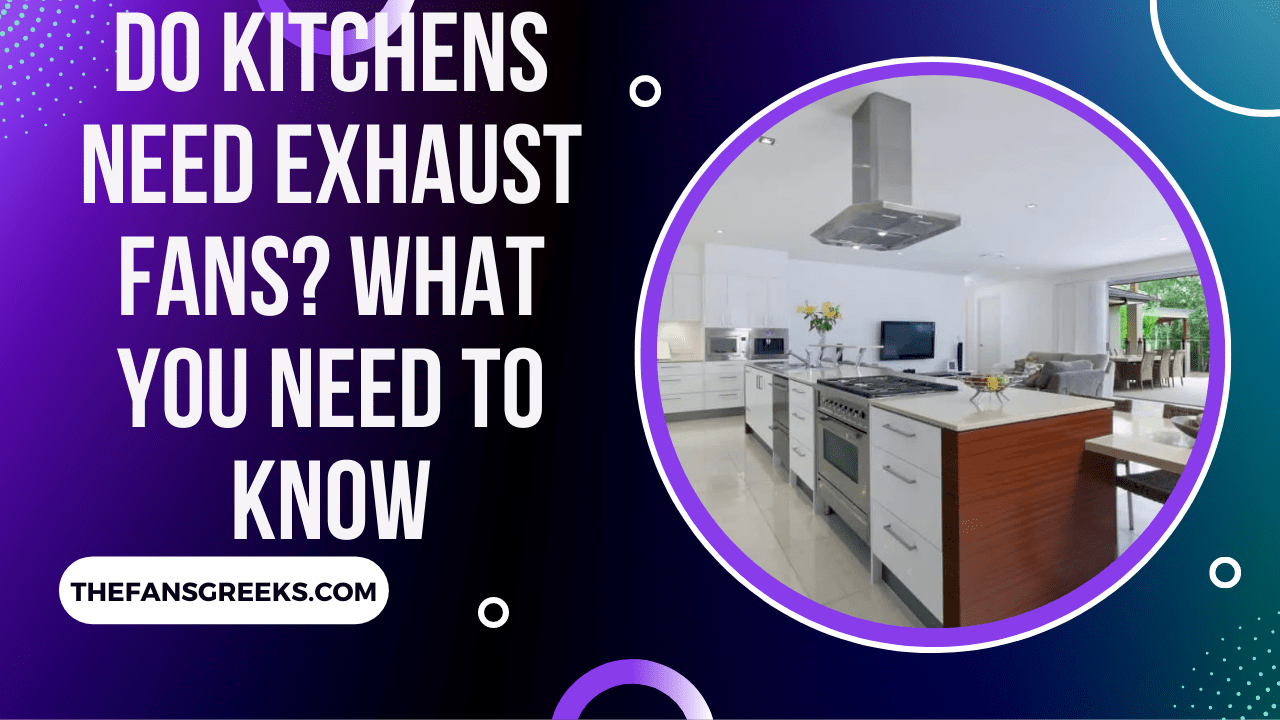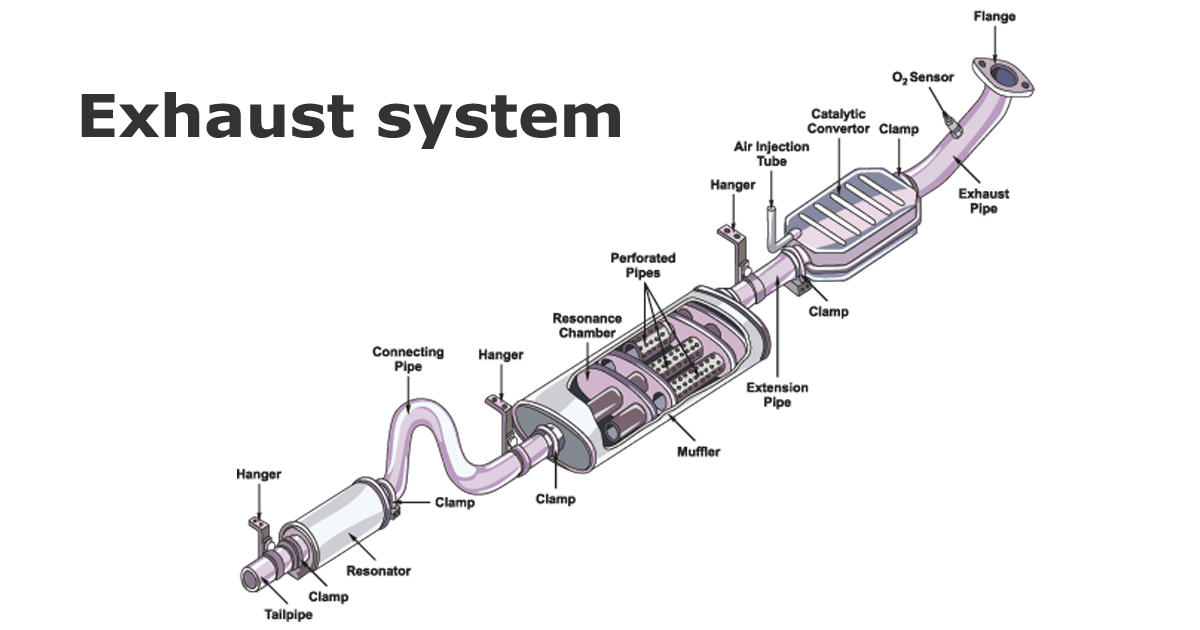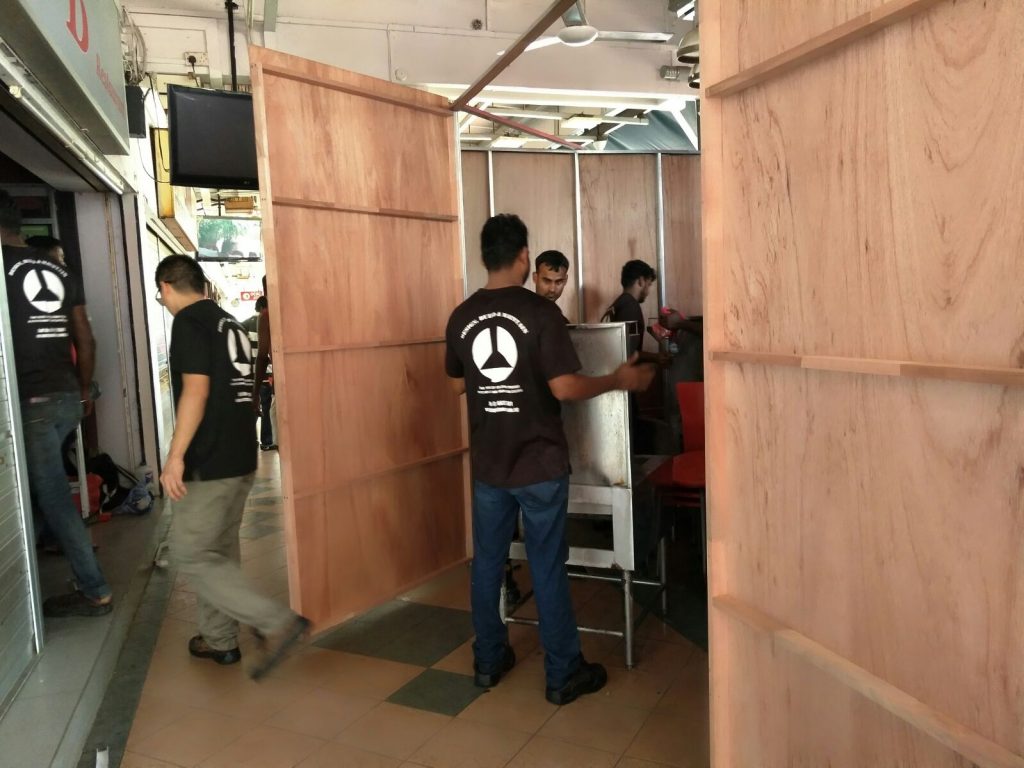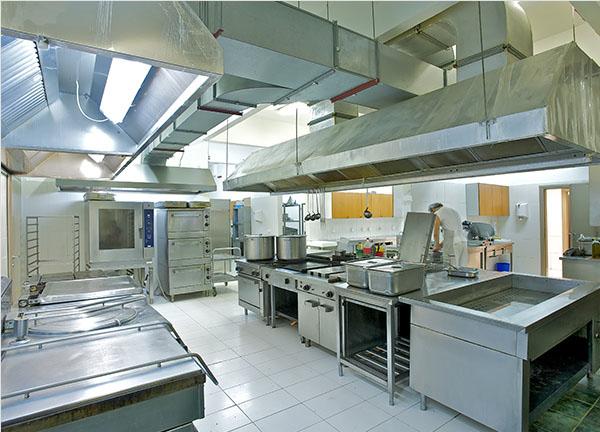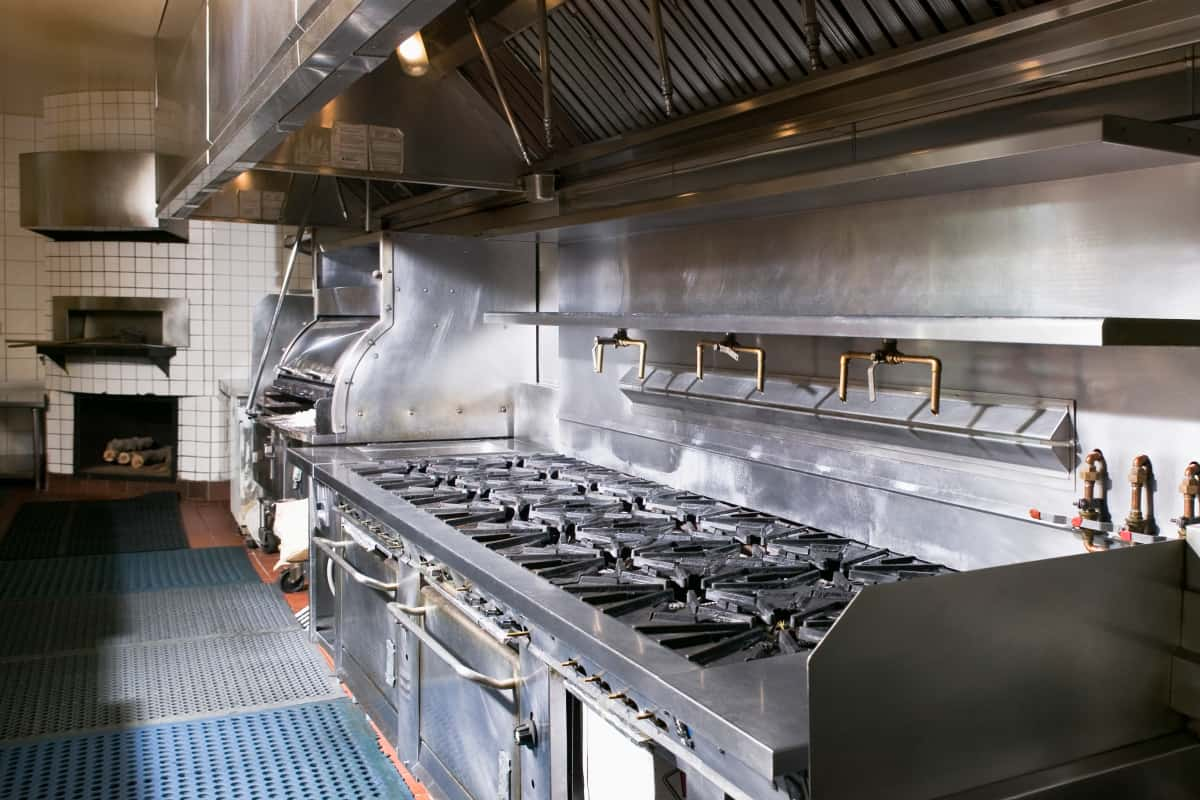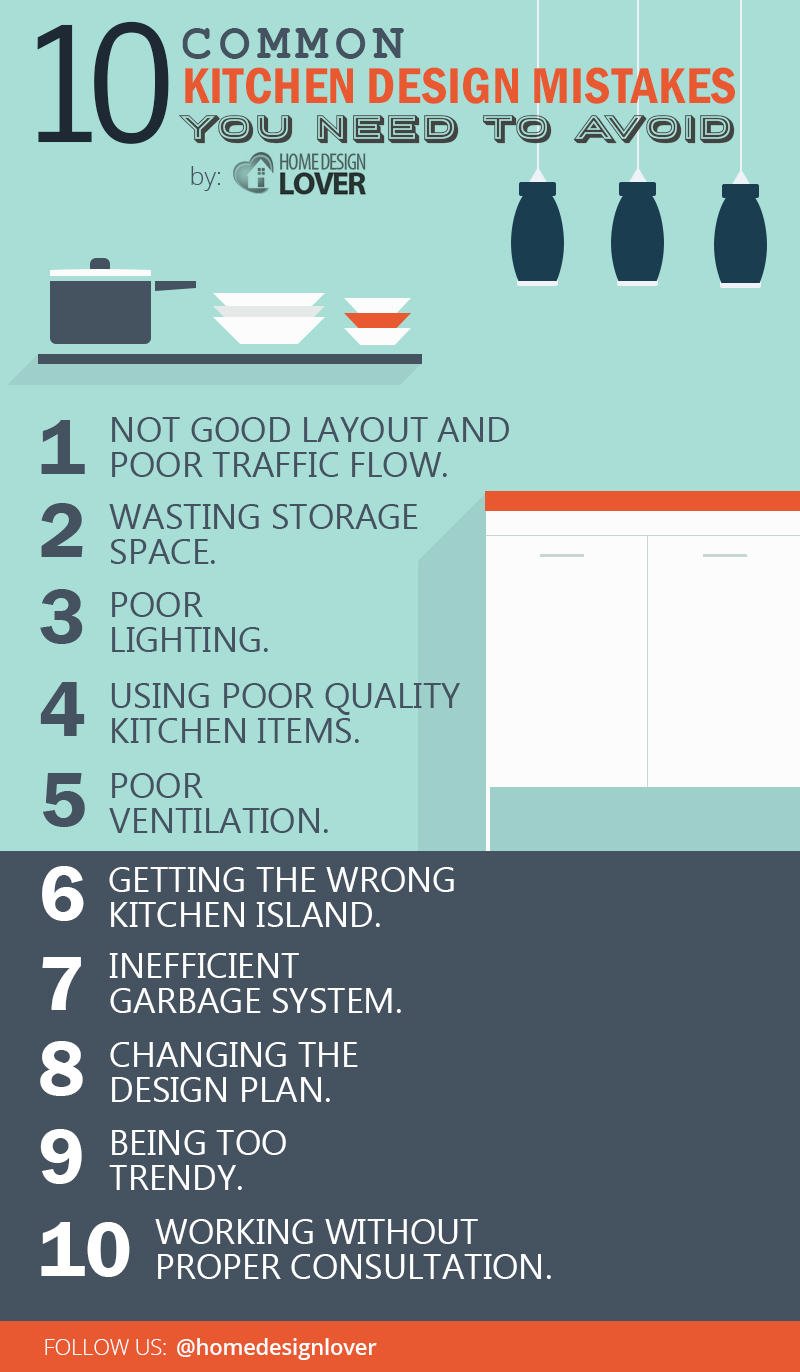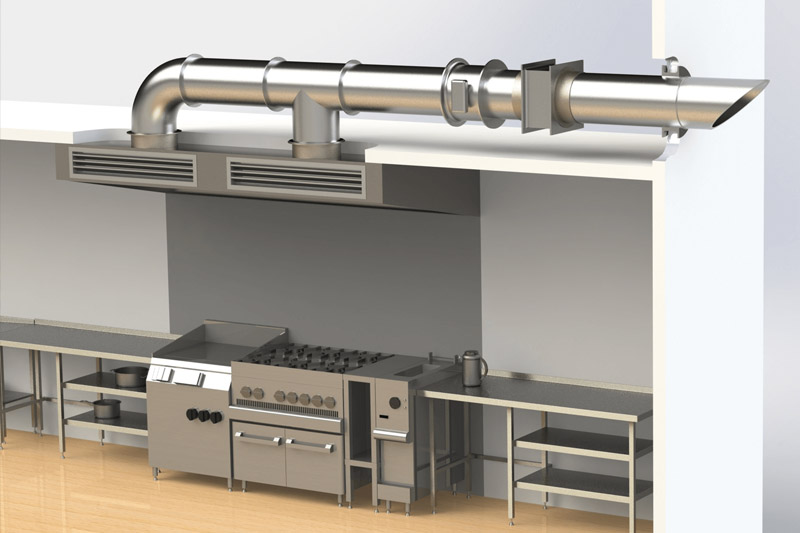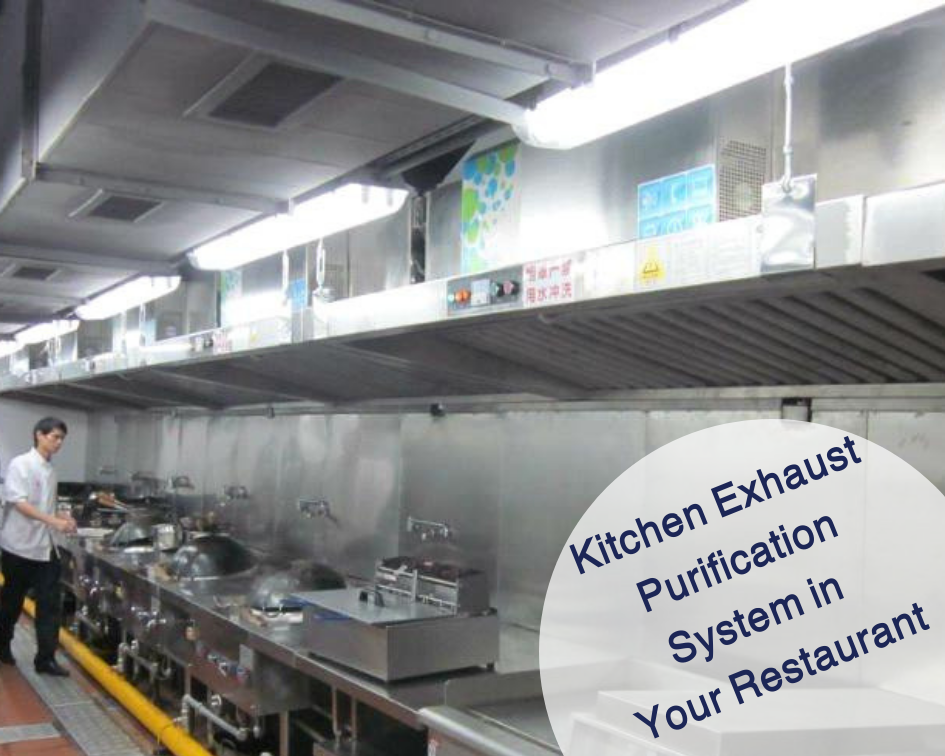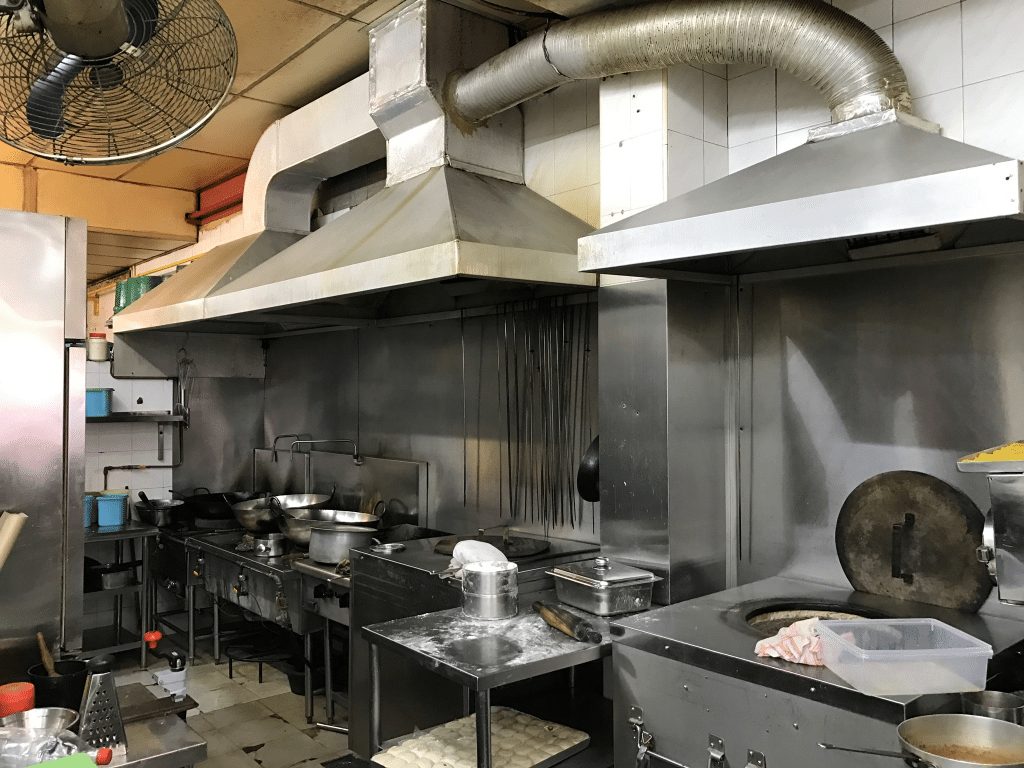Are you tired of dealing with a smoky kitchen or lingering cooking odors? It may be time to upgrade your kitchen exhaust system. A well-designed kitchen exhaust system not only improves air quality, but it also helps to keep your kitchen clean and safe. Here are five tips for designing a better kitchen ventilation system. Tip #1: Proper Sizing is Key When it comes to kitchen exhaust design, one of the most important factors is proper sizing. The exhaust fan should be powerful enough to effectively remove smoke, steam, and odors from your kitchen. A general rule of thumb is to have an exhaust fan that can move at least 100 cubic feet of air per minute (CFM) for every 10 inches of stove width. For example, if your stove is 30 inches wide, you should have an exhaust fan that can move at least 300 CFM. Tip #2: Consider Placement The placement of your exhaust fan is also crucial for its effectiveness. Ideally, it should be installed directly above the stovetop for maximum ventilation. If this is not possible, make sure the fan is no more than a few feet away from the stovetop for optimal results. Additionally, consider the placement of your exhaust ducts. They should be short and straight to minimize airflow restrictions. Tip #3: Don't Forget the Filters The filters in your kitchen exhaust fan are responsible for trapping grease and other particles that can accumulate in your ductwork. It's important to regularly clean or replace these filters to ensure that your exhaust system is functioning properly. Neglecting to do so can result in reduced efficiency and potential fire hazards. Tip #4: Noise Control Matters No one wants to hear a loud, obnoxious exhaust fan while cooking or entertaining in the kitchen. When choosing an exhaust fan, consider the noise level it produces. Look for fans with a lower sone rating, which indicates a quieter operation. You can also opt for an external exhaust fan, which is installed outside of your home and significantly reduces noise levels inside. Tip #5: Regular Maintenance is Essential Even with proper design and installation, your kitchen exhaust system will only function at its best if you keep up with regular maintenance. This includes cleaning the fan and ducts, replacing filters, and inspecting for any potential issues. Neglecting to maintain your exhaust system can lead to decreased efficiency, increased energy costs, and potential safety hazards.1. Kitchen Exhaust Design: 5 Tips for a Better Kitchen Ventilation System
A well-designed kitchen exhaust system is essential for any home cook. Not only does it improve air quality and keep your kitchen clean, but it also helps to prevent potential safety hazards. Here are some key steps to consider when designing a kitchen exhaust system. Step 1: Determine Your Ventilation Needs The first step in designing a kitchen exhaust system is to determine your specific ventilation needs. Consider the size of your kitchen, the type of cooking you do, and the amount of smoke, steam, and odors produced. You may also want to consider installing a range hood, which can help to further filter and trap grease and other particles. Step 2: Choose Your Exhaust Fan As mentioned earlier, proper sizing is key when choosing an exhaust fan for your kitchen. In addition to CFM, consider the noise level, energy efficiency, and any additional features such as built-in lighting or a remote control. It's also important to choose a fan that is compatible with your ductwork and ventilation needs. Step 3: Plan for Proper Placement The placement of your exhaust fan is crucial for its effectiveness. As mentioned before, it should be installed directly above the stovetop or as close to it as possible. Additionally, make sure that the ductwork is properly sized and installed to minimize restrictions and maximize airflow. Step 4: Consider the Type of Exhaust System There are two main types of kitchen exhaust systems: ducted and ductless. Ducted systems vent the air outside of your home, while ductless systems use filters to recirculate the air back into the kitchen. Ducted systems are generally more effective, but ductless systems can be a good option if installing ductwork is not feasible. Step 5: Regular Maintenance is Key Just like any other appliance in your home, regular maintenance is essential for the longevity and effectiveness of your kitchen exhaust system. Be sure to clean or replace filters, inspect for any potential issues, and schedule professional maintenance as needed.2. How to Design a Kitchen Exhaust System
Proper kitchen exhaust design is crucial for maintaining a safe and healthy kitchen environment. Not only does it help to remove smoke, steam, and odors, but it also prevents grease buildup and potential fire hazards. Here are some key reasons why proper kitchen exhaust design is so important. Improves Air Quality Cooking can produce a variety of pollutants and irritants such as carbon monoxide, nitrogen dioxide, and particulate matter. These can be harmful to your health if not properly ventilated. A well-designed kitchen exhaust system helps to remove these pollutants and improve air quality, making your kitchen a safer and more comfortable place to cook. Prevents Grease Buildup The filters in your kitchen exhaust fan play a crucial role in trapping grease and other particles that can accumulate in your ductwork. Without proper ventilation, these particles can build up and create a potential fire hazard. Regular maintenance is key to preventing grease buildup and keeping your kitchen safe. Reduces Energy Costs A properly designed and maintained kitchen exhaust system can also help to reduce your energy costs. By effectively removing hot air and moisture from your kitchen, your air conditioner won't have to work as hard to cool down the space. This can lead to significant savings on your energy bill. Increases Comfort and Enjoyment Let's face it, cooking in a hot and stuffy kitchen is not enjoyable. A well-designed kitchen exhaust system helps to remove excess heat and moisture, making your cooking experience more comfortable and enjoyable. It also prevents cooking odors from lingering, making your home a more pleasant place to be.3. The Importance of Proper Kitchen Exhaust Design
When it comes to kitchen exhaust design, there are a few key things you need to know to ensure a safe and effective system. Here are some important considerations to keep in mind. Sizing and Placement As mentioned earlier, proper sizing and placement are crucial for the effectiveness of your kitchen exhaust system. Make sure to choose an exhaust fan that is powerful enough for your specific needs and install it directly above the stovetop for maximum ventilation. Filters and Maintenance Regular maintenance is essential for keeping your kitchen exhaust system functioning properly. This includes cleaning or replacing filters, inspecting for any potential issues, and scheduling professional maintenance as needed. Neglecting maintenance can lead to reduced efficiency and potential safety hazards. Ductwork Considerations The type and placement of your ductwork also play a crucial role in the effectiveness of your kitchen exhaust system. Make sure your ducts are properly sized and installed to minimize airflow restrictions and maximize ventilation. Consider using smooth and straight ducts to improve airflow. Noise Control No one wants to deal with a loud and disruptive exhaust fan in their kitchen. When choosing an exhaust fan, consider the noise level it produces and opt for a lower sone rating for a quieter operation. You can also choose to install an external exhaust fan, which can significantly reduce noise levels inside your home. Energy Efficiency Choosing an energy-efficient exhaust fan can not only save you money on your energy bill, but it also helps to reduce your carbon footprint. Look for fans with the ENERGY STAR label, which meet strict energy efficiency guidelines set by the U.S. Environmental Protection Agency.4. Kitchen Exhaust Design: What You Need to Know
A well-designed kitchen exhaust system is essential for any home cook. Not only does it improve air quality and keep your kitchen clean, but it also helps to prevent potential safety hazards. Here are some key tips for designing an effective kitchen ventilation system. Size Matters As mentioned earlier, proper sizing is key when it comes to your kitchen exhaust system. Make sure to choose an exhaust fan that is powerful enough for your specific needs. For maximum effectiveness, the fan should be able to move at least 100 CFM for every 10 inches of stove width. Choose the Right Exhaust Fan There are various types of exhaust fans available, so it's important to choose the right one for your kitchen. Consider factors such as noise level, energy efficiency, and compatibility with your ductwork. You may also want to consider additional features such as built-in lighting or a remote control. Placement is Key The placement of your exhaust fan is crucial for its effectiveness. It should be installed directly above the stovetop or as close to it as possible. If this is not possible, make sure the fan is no more than a few feet away from the stovetop for optimal ventilation. Additionally, consider the placement of your ducts to minimize airflow restrictions. Regular Maintenance is Essential To ensure your kitchen exhaust system continues to function at its best, regular maintenance is essential. This includes cleaning or replacing filters, inspecting for any potential issues, and scheduling professional maintenance as needed. Neglecting maintenance can lead to decreased efficiency and potential safety hazards. Consider Noise Control Noise control is an important factor to consider when designing a kitchen exhaust system. Look for fans with a lower sone rating for a quieter operation, or opt for an external exhaust fan to significantly reduce noise levels inside your home.5. Designing an Effective Kitchen Exhaust System
Designing a kitchen exhaust system may seem straightforward, but there are some common mistakes that homeowners make. Avoiding these mistakes can help to ensure a safe and effective ventilation system for your kitchen. Choosing the Wrong Size Fan One of the most common mistakes when it comes to kitchen exhaust design is choosing the wrong size fan. If the fan is too small, it won't effectively remove smoke, steam, and odors from your kitchen. If it's too large, it can create negative pressure and cause backdrafting of gas appliances. Make sure to choose a fan that is properly sized for your specific needs. Improper Placement The placement of your exhaust fan is crucial for its effectiveness. If it's installed too far away from the stovetop, it won't be able to remove smoke and other pollutants effectively. Make sure to install the fan as close to the stovetop as possible for maximum ventilation. Ignoring Maintenance Regular maintenance is essential for keeping your kitchen exhaust system functioning properly. Neglecting to clean or replace filters, inspect for any potential issues, and schedule professional maintenance can lead to decreased efficiency and potential safety hazards. Not Considering Noise Control Noise control is an important factor to consider when designing a kitchen exhaust system. A loud and disruptive exhaust fan can be a major annoyance while cooking or entertaining in the kitchen. Make sure to consider the noise level of the fan and opt for a lower sone rating for a quieter operation. Neglecting Energy Efficiency Choosing an energy-efficient exhaust fan not only helps to save money on your energy bill, but it also reduces your carbon footprint. Look for fans with the ENERGY STAR label, which meet strict energy efficiency guidelines set by the U.S. Environmental Protection Agency.6. Kitchen Exhaust Design: Common Mistakes to Avoid
A well-designed kitchen exhaust system offers numerous benefits for homeowners. Here are some key advantages of having a properly functioning kitchen ventilation system. Improves Air Quality A well-designed kitchen exhaust system helps to remove pollutants and irritants from your kitchen, improving air quality and making your cooking experience more comfortable and safe. It also helps to prevent potential health hazards caused by exposure to cooking pollutants. Keeps Your Kitchen Clean By effectively removing smoke, steam, and grease, a kitchen exhaust system can help to keep your kitchen clean and free of unwanted odors. It also helps to prevent grease buildup in your ductwork, reducing the risk of potential fire hazards. Reduces Energy Costs Properly ventilating your kitchen can also help to reduce your energy costs. By removing hot air and moisture, your air conditioner won't have to work as hard to cool down the space. This can lead to significant savings on your energy bill. Increases Comfort and Enjoyment7. The Benefits of a Well-Designed Kitchen Exhaust System
The Importance of Proper Exhaust Design for Kitchen
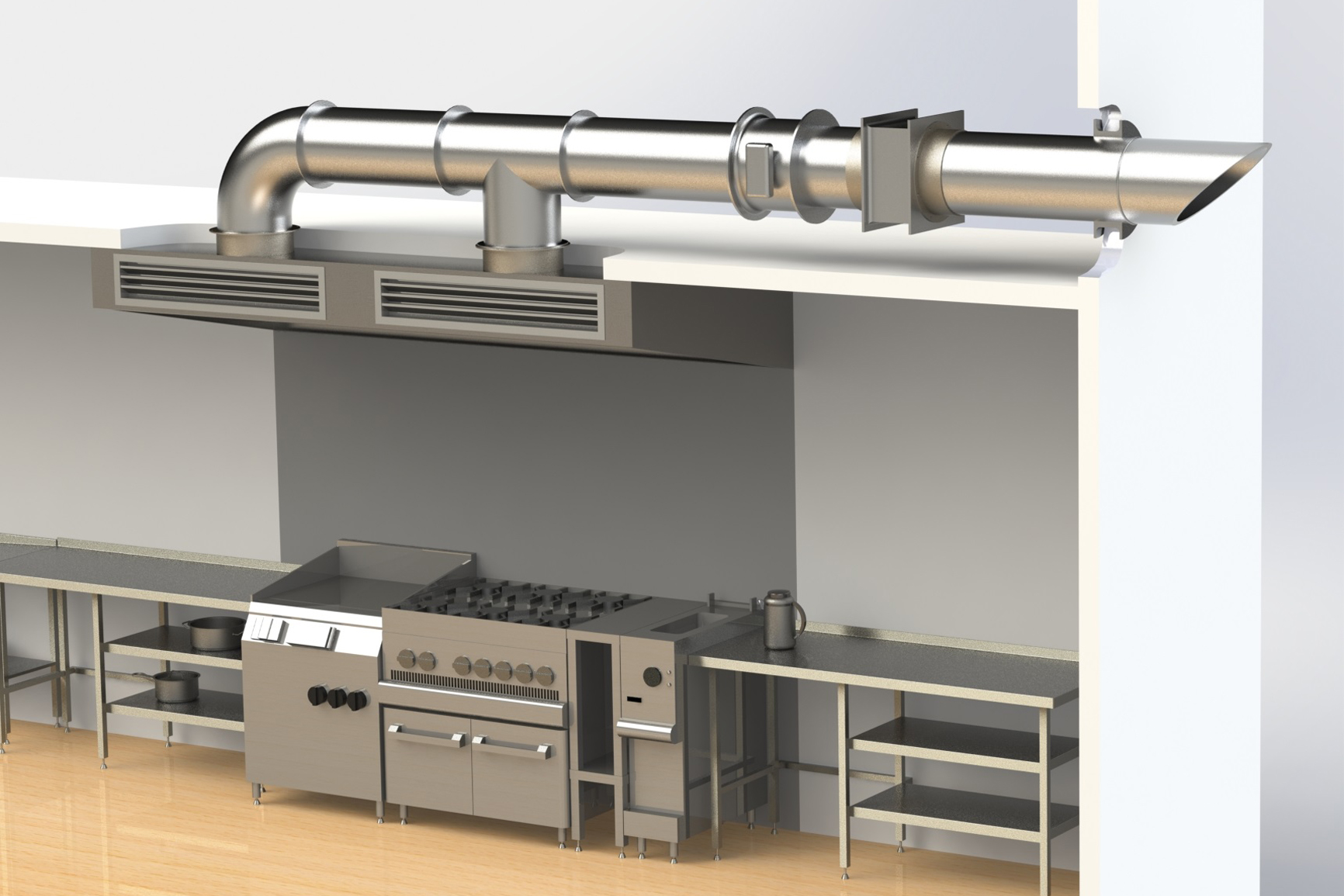
Why is Exhaust Design Important?
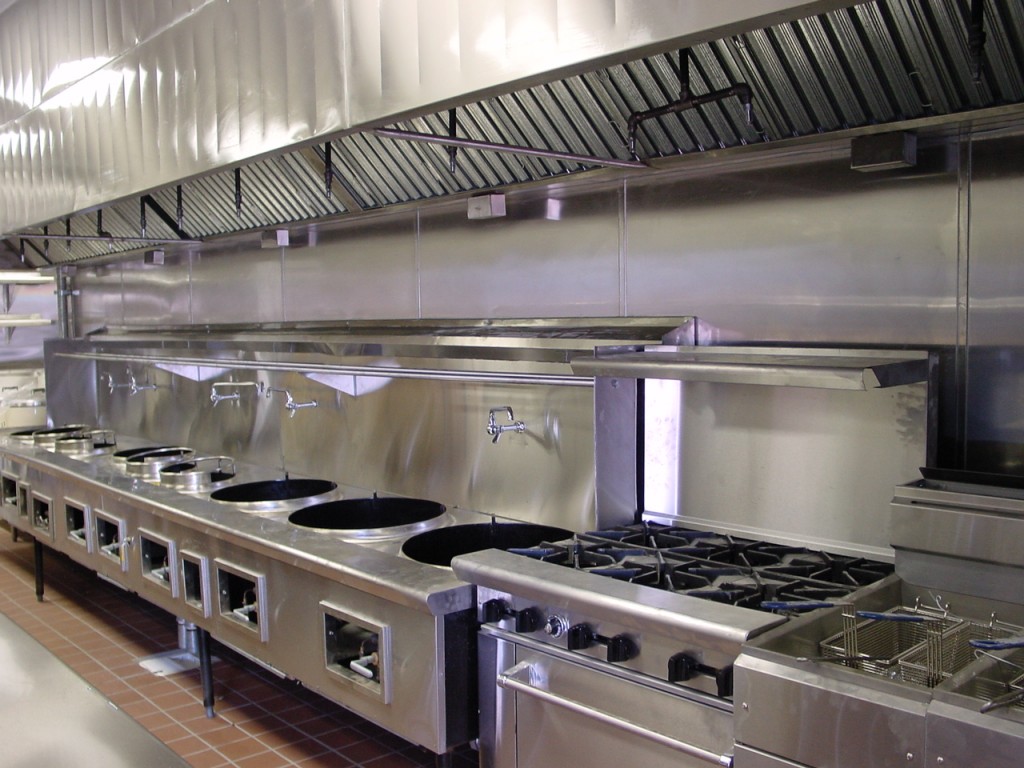 When it comes to designing a kitchen, exhaust systems are often overlooked. However, the exhaust system is an essential component of a well-designed kitchen. It plays a crucial role in maintaining a clean and healthy environment while cooking.
Proper exhaust design for kitchen
can eliminate harmful pollutants, control cooking odors, and reduce the risk of fire hazards.
When it comes to designing a kitchen, exhaust systems are often overlooked. However, the exhaust system is an essential component of a well-designed kitchen. It plays a crucial role in maintaining a clean and healthy environment while cooking.
Proper exhaust design for kitchen
can eliminate harmful pollutants, control cooking odors, and reduce the risk of fire hazards.
The Benefits of a Well-Designed Exhaust System
 A well-designed exhaust system can provide numerous benefits for both the homeowners and their kitchen. The first and most obvious benefit is the removal of smoke, steam, and grease from the kitchen, which can make cooking and cleaning up much more comfortable.
Exhaust systems
also prevent excessive heat and humidity buildup in the kitchen, making it more comfortable to work in.
Another advantage of a properly designed exhaust system is its ability to remove harmful pollutants. Cooking releases a variety of pollutants, such as carbon monoxide, nitrogen dioxide, and volatile organic compounds (VOCs). These pollutants can cause respiratory problems and aggravate existing health conditions. An efficient exhaust system can eliminate these pollutants and maintain a healthy indoor air quality.
A well-designed exhaust system can provide numerous benefits for both the homeowners and their kitchen. The first and most obvious benefit is the removal of smoke, steam, and grease from the kitchen, which can make cooking and cleaning up much more comfortable.
Exhaust systems
also prevent excessive heat and humidity buildup in the kitchen, making it more comfortable to work in.
Another advantage of a properly designed exhaust system is its ability to remove harmful pollutants. Cooking releases a variety of pollutants, such as carbon monoxide, nitrogen dioxide, and volatile organic compounds (VOCs). These pollutants can cause respiratory problems and aggravate existing health conditions. An efficient exhaust system can eliminate these pollutants and maintain a healthy indoor air quality.
Factors to Consider in Exhaust Design for Kitchen
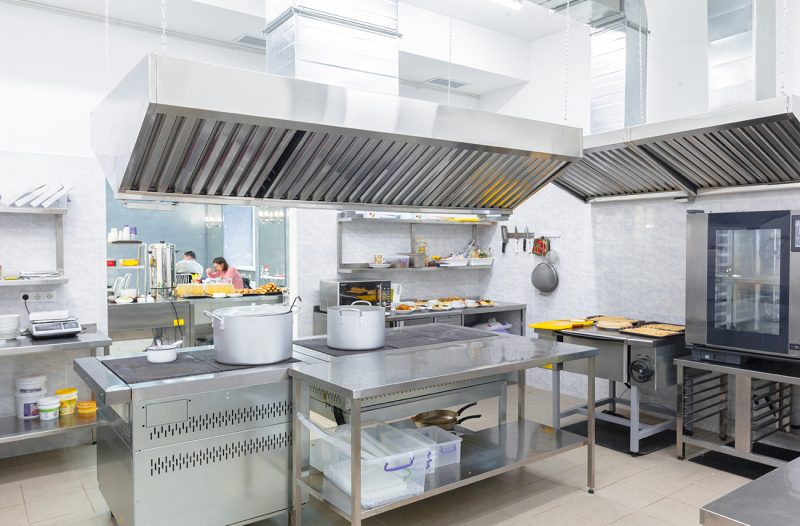 Proper exhaust design for kitchen
should take into consideration several factors to ensure its effectiveness. The size of the kitchen, type of cooking equipment, and location of the exhaust system are all crucial elements that must be considered.
The size of the kitchen is a significant factor in determining the size and power of the exhaust system. A larger kitchen with more cooking appliances will require a more powerful exhaust system to effectively remove pollutants and odors.
The type of cooking equipment used in the kitchen will also play a role in the exhaust design. Certain appliances, such as gas stoves and grills, produce more smoke and grease, requiring a more robust exhaust system.
The location of the exhaust system is another important consideration. It should be strategically placed above the cooking area to effectively capture and remove pollutants. Additionally, the exhaust ducts should be properly installed to ensure efficient airflow.
Proper exhaust design for kitchen
should take into consideration several factors to ensure its effectiveness. The size of the kitchen, type of cooking equipment, and location of the exhaust system are all crucial elements that must be considered.
The size of the kitchen is a significant factor in determining the size and power of the exhaust system. A larger kitchen with more cooking appliances will require a more powerful exhaust system to effectively remove pollutants and odors.
The type of cooking equipment used in the kitchen will also play a role in the exhaust design. Certain appliances, such as gas stoves and grills, produce more smoke and grease, requiring a more robust exhaust system.
The location of the exhaust system is another important consideration. It should be strategically placed above the cooking area to effectively capture and remove pollutants. Additionally, the exhaust ducts should be properly installed to ensure efficient airflow.
In Conclusion
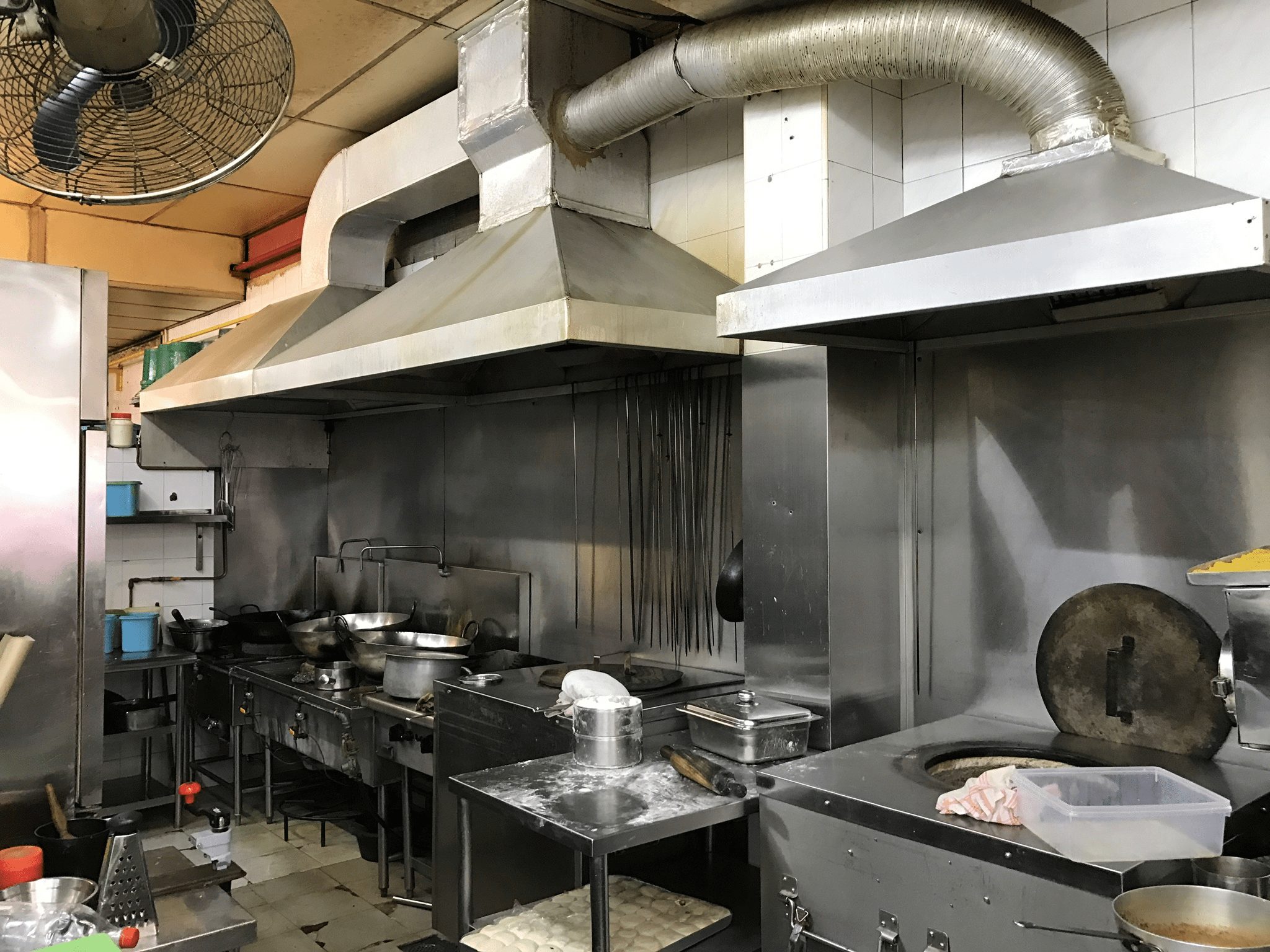 Exhaust design for kitchen
may not be the most glamorous aspect of house design, but it is undoubtedly an essential one. A well-designed exhaust system can provide numerous benefits, including a cleaner and healthier kitchen environment. When designing your kitchen, be sure to carefully consider the exhaust system to ensure its effectiveness and efficiency.
Exhaust design for kitchen
may not be the most glamorous aspect of house design, but it is undoubtedly an essential one. A well-designed exhaust system can provide numerous benefits, including a cleaner and healthier kitchen environment. When designing your kitchen, be sure to carefully consider the exhaust system to ensure its effectiveness and efficiency.




